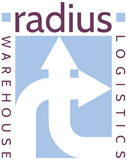Best Practice Guidelines for Cargo Securing for Road Shipments
When using road haulage services to get your goods from A-to-B, one of the main risk factors is damage. While road freight is one of the safest ways to transport products across one country or internationally, there are still risks involved. After all, your product needs to be packaged and moved long distances in a vehicle that needs to navigate roads quickly and efficiently. Ensuring cargo has been appropriately secured is a key way of minimising this, protecting parcels and maintaining a good business reputation. Our guide will walk you through the best practice guidelines, based on the European Best Practices Guidelines on Cargo Securing for Road Transport.
Use the correct cargo description
Attempting to transport products fraudulently can incur significant fines and penalties. It is important that you declare all of the items within a vehicle, including the following information:
- The total mass of the load.
- The mass of each load unit.
- The position of the centre-of-gravity for each load unit (particularly if it’s not centre).
- The enveloping dimensions of each load unit.
- Any limitations for stacking, direction or the orientation of cargo needed during transport.
- Correct classification of dangerous goods, if relevant.
- Include dangerous goods transport documents fully signed and completed, if required.
Communicate well with the driver
Most international haulage drivers will deal with many different cargo sizes and types. Therefore, it is important that you communicate clearly with your driver. Make sure they understand:
- What the cargo is that they are transporting.
- Specific requests and requirements when it comes to securing the load.
- That no unwanted interaction occurs between the cargo of different loaders.
- The loading plan supplied.
- How the cargo should be unloaded at the end destination.
- What to do if the cargo shifts position during transport.
In some countries, the contents of a vehicle are deemed the property of the driver until this is passed on to the end customer. Therefore, it is important that your driver has all the relevant information they may need to pass through countries safely and efficiently.
Ensure the vehicle is safe and appropriate
Depending on the weight and dimensions of your cargo, you’ll need to ensure the vehicle in question is suitable. Can it safely support the load weight during the entirety of its journey? Does the load need to split across two deliveries? Make sure that the vehicle and the load units can be packed within the stressors expected in normal transport conditions. Make sure the vehicle floor is not overstressed and that the cargo is safely distributed. The securing equipment needs to be appropriate to the shipment in question with additional safety methods used when required.
Load the vehicle safely and properly
The entire cargo shipment loaded into a vehicle needs to be done in a safe and efficient manner. Most experienced drivers will be able to advise on this, working alongside a loading plan to keep your products safe. However, some best practices include:
- Stacking the load against the headboard while maintaining a low centre of gravity.
- Ensuring the load is stable and there is a reduced risk of tipping during unloading.
- If a load is unstable on its own, use the appropriate supports and restraints to secure it.
- Ensure the load is placed right up against the headboard. If this section is damaged, it should be replaced as quickly as possible.
- If you are unable to load against the headboard, use securing equipment such as lashings, chocks, blocking or sails. These will prevent the cargo from sliding during movement.
- Make sure that the cargo load is equally distributed.
- Make sure the vehicle is not overloaded.
- Make sure all relevant safety equipment is used including anti-slip mats, stuffing and blocking bars.
- Once loaded has been completed, ensure the vehicle is securely sealed.
- Make sure the cargo is secure throughout the entire journey.
Understand the different securing methods for cargo
With any large cargo shipment, a combination of securing methods are used to ensure products are safe during transit. The exact ones required for any shipment should be detailed in the loading plan or specified by the driver/loader as a means to minimise damage. The most common ones are:
Blocking/Bracing
Here, timber or metal bars are used between parcels to prevent them from shifting within the loading compartment.
Fasteners
In certain vehicles and for specific loads, bolts or nails may be used to fasten packages. This can be used on the cargo parcels themselves or on the timber braces used.
Dunnage
Another way of preventing cargo from sliding around is to use timber offcuts to pad out the voids between cargo.
Strapping
Most commonly used within road freight vehicles, strapping comes in many different materials. These include steep, polyester, polypropylene, nylon, paper and composite. These vary in strength and elasticity as well as being able to withstand different environments and being easy to use. There are also different options available, in terms of cost.
Lashings
Everything from ropes and cables through to wires, chains, strapping and nets falls under the umbrella term, lashings. They are used to anchor cargo to the shipping container.
Understanding the best practices for loading cargo in preparation for international haulage allows you to take steps to minimise damage and loss. Here at Radius Warehouse and Logistic Services, we pride ourselves in having the skill and expertise needed to advise on road freight and haulage across the world. Our team has worked with customs experts and haulage companies for many years, giving us the ability to support your business growth needs. If you have any questions about the road freight services we provide, how best to plan out your next shipment or would like to request a quote, get in contact today.



